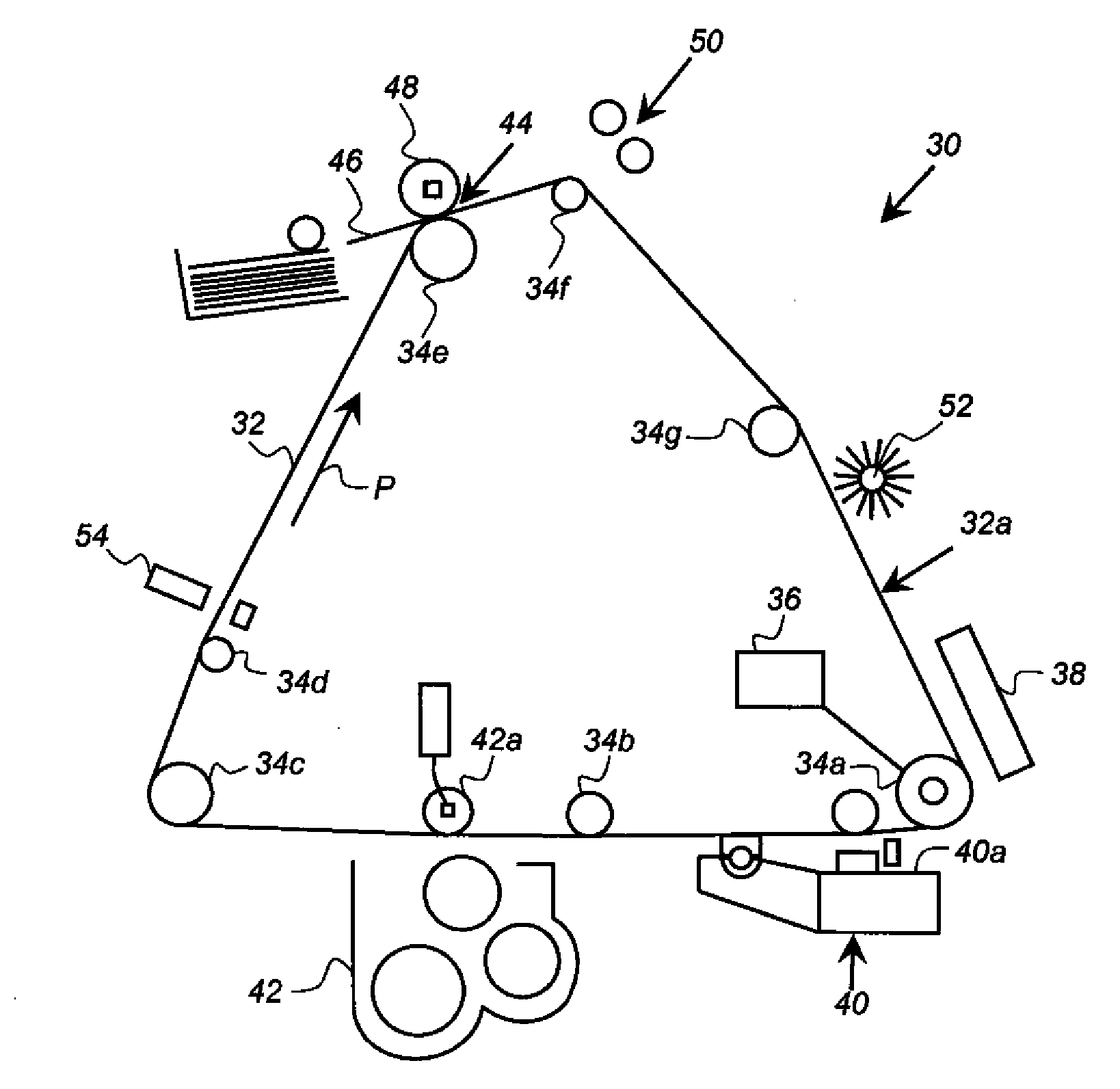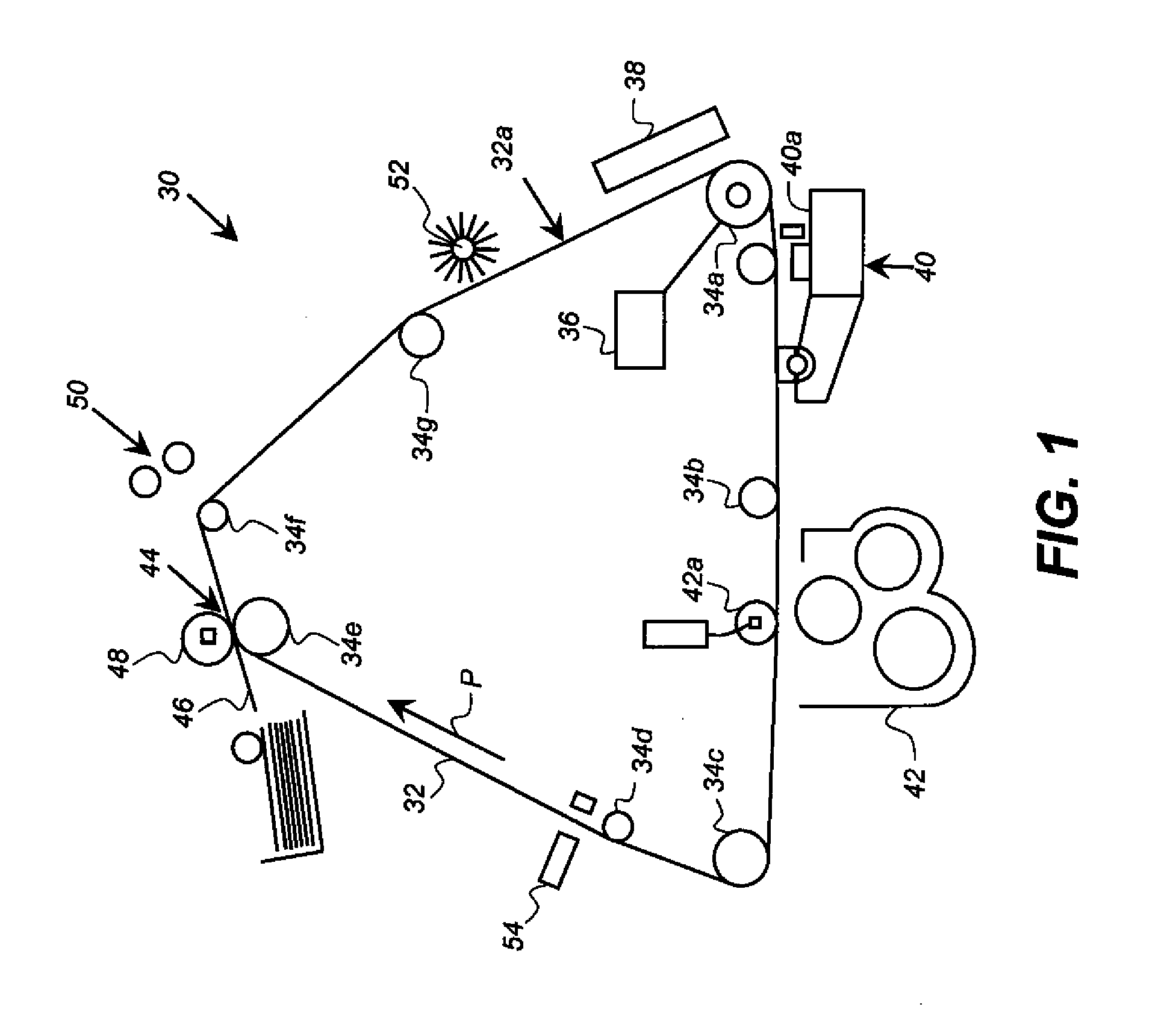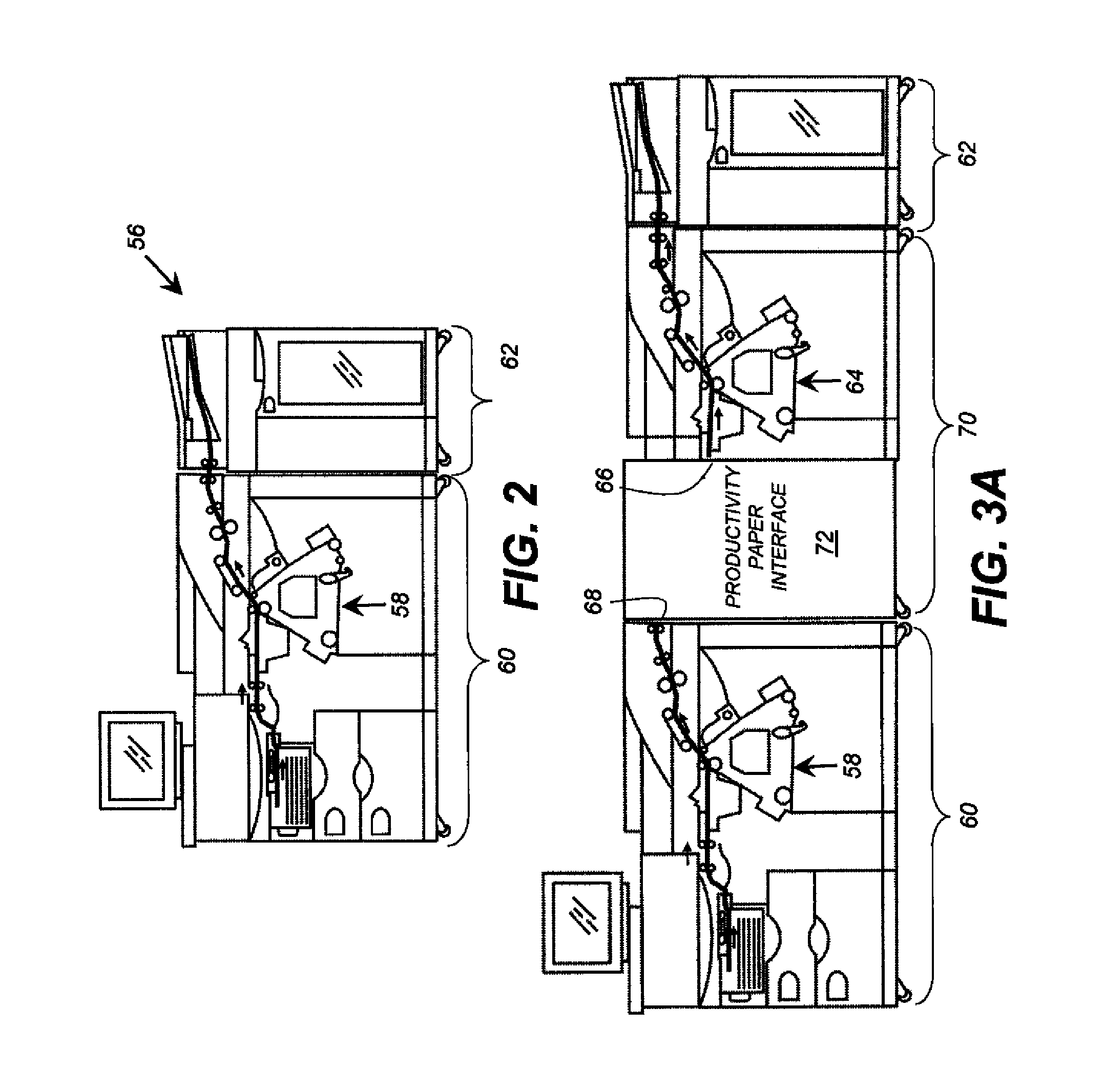Multi-component duplex printer
- Summary
- Abstract
- Description
- Claims
- Application Information
AI Technical Summary
Benefits of technology
Problems solved by technology
Method used
Image
Examples
Embodiment Construction
[0052]Reference is made to U.S. patent application Ser. No. 12 / 128,897, filed May 29, 2008 (Published as US 2009029740), and to U.S. patent application Ser. No. 13 / 047,939, filed Mar. 15, 2011, the disclosures of which are hereby incorporated herein by reference.
[0053]Examples of inkjet printers are found in U.S. Patent Publication 20110148999, filed Dec. 21, 2009 (drop-on-demand) by O'Leary, et al, U.S. Pat. No. 6,505,921 to Chwalek et al. (continuous), and U.S. Pat. No. 6,508,543 to Hawkins et al. (continuous), the disclosures of which are incorporated herein by reference. Drop-on-demand or continuous inkjet printers can be used with various embodiments. In a drop-on-demand printer, ink is forced out of a nozzle by heat or pressure (e.g., piezoelectric) whenever a location of the receiver member that should receive a drop is in position with respect to the nozzle. In a continuous-inkjet printer, drops are forced out of a nozzle at a regular rate, and drops are deflected so that on...
PUM
 Login to View More
Login to View More Abstract
Description
Claims
Application Information
 Login to View More
Login to View More - R&D
- Intellectual Property
- Life Sciences
- Materials
- Tech Scout
- Unparalleled Data Quality
- Higher Quality Content
- 60% Fewer Hallucinations
Browse by: Latest US Patents, China's latest patents, Technical Efficacy Thesaurus, Application Domain, Technology Topic, Popular Technical Reports.
© 2025 PatSnap. All rights reserved.Legal|Privacy policy|Modern Slavery Act Transparency Statement|Sitemap|About US| Contact US: help@patsnap.com



